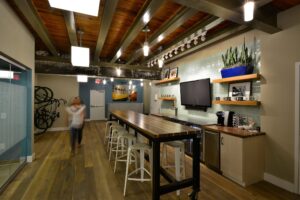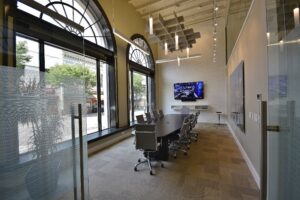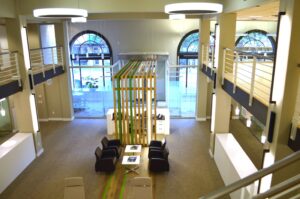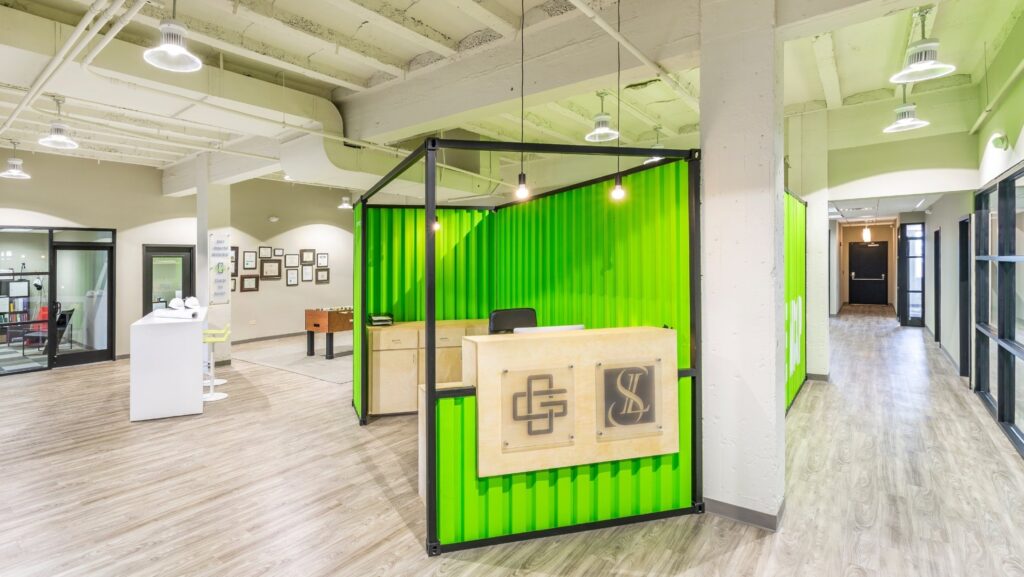Office space is an asset class of commercial real estate that has experienced transformative changes since the great recession. I would argue that the office market has experienced the greatest transformation relative to the major asset classes coming out of the recession and will continue to serve as a local and national barometer of economic health. That measure of economic health is seen in office expansion, mergers and acquisitions, velocity of office space inquiries, etc., yet these metrics lag behind the broader market by a quarter or more. Numerous macro and micro trends such as shifts in corporate culture, workforce demographics, measures of profitability and efficiency,and global urbanization manifest themselves as changes in office markets across the country.
I have witnessed these changes first hand as my core focus at LTP has been across every aspect of the office market. LTP is involved in the acquisition, disposition, leasing, investments, development, and redevelopment of office space. Additionally, the partners of LTP helped launch Front Street Capital, a private equity real estate fund focused on class A office assets across the Southeast. Through a series of posts, I will focus on each of these major trends in the office market and how I have seen each affect landlords, tenants, investors, and the overall real estate marketplace.
FOSTERING WORKPLACE CULTURE
Let’s focus first on the trend of workplace culture and how that is fostered through office design. Today we are seeing individual companies and entire industries shift schools of thought as it relates to embracing their workspaces. CEO’s are moving out of private offices; corporations have led the movement to ‘open’ work environments; traditional users, such as lawyers and CPA’s, are challenging their traditional workplace reputation through office space design; and walkable urban spaces are at the top of the list for nearly every new office move. In each of these examples, the companies are using office space as a new way to achieve higher productivity, define company culture, and develop a better overall work/life balance for employees and executives alike.
The common thread throughout this trend of the relationship between office culture and office design is primarily focused on every business’s greatest asset – its people. Engaging millennials who see the ‘work day’ in a completely new way, bringing experienced executives into the mix to promote interaction and knowledge sharing, and a general ‘flattening’ of the employee structure are all achieved through modern and innovative office design. It is now commonplace for corporations we work with to design new office space based around ‘points of collision’ that result in a cultural shift towards employee engagement and collaboration. Investing in common spaces with design and technology to provide employees different places to work, break rooms with coffee bars and kegerators that allow for greater employee interaction, activity spaces, or even treadmills that provide standing desks for the more active employee all intended to bring people out of their offices and break the traditional office schedule.



OUR OFFICE DESIGN
Our office design at LTP, through the help of architects at Stitch Design Shop, puts significant emphasis on these ‘points of collision,’ collaboration, and employee interaction. Full glass offices help create an atmosphere of accessibility, transparency, and friendly competition among our brokers. Investments in collaborative spaces make it possible to host four to five meetings at the same time in multiple places around the office, which helps boost the vibrant working environment. The most popular area is the common coffee bar, which also doubles as an after-hours social gathering place. The space features plenty of room for entertaining and, just as importantly, a 2-tap kegerator with a rotation of local brews. We intentionally made this space available for every tenant in the building, resulting in a regular buzz about the office around 5pm as the space is filled with clients or networking events from various tenants in our building. We often joke that some of the best deals or client solutions are conjured up sitting around that long table by the bar.
OTHER GREAT EXAMPLES
Another great example of embracing office design is Smith Leonard, PLLC, who recently opened a Winston-Salem office on the 2nd floor of our building. They joined GEMCAP Companies in an open workspace, featuring a front desk built out of a shipping container and graffiti art from a designer out of New York City. Although CPA’s are not usually known for ‘creative’ offices, this space design is a dramatic contrast from their headquarters for all the right reasons. Smith Leonard has embraced our building’s next-generation culture as a representation of their firm’s commitment to innovative thinking. They also view the space as an asset in the recruitment and retention of top young talent in our region. They now host a social gathering every month in the building’s common bar area that regularly draws crowds of 25 to 50 people including clients and business leaders from across the Piedmont Triad.

Office space is no longer a place to go and plug in a computer, it is a reflection of the culture and values of individual businesses. We will continue to see a greater emphasis on the design, functionality and purpose of the office space as this asset class continues to shift across the country.
Stay tuned for a look at other ways the office market has shifted to date and what issues will remain key drivers for office space going forward. Read Part Two
